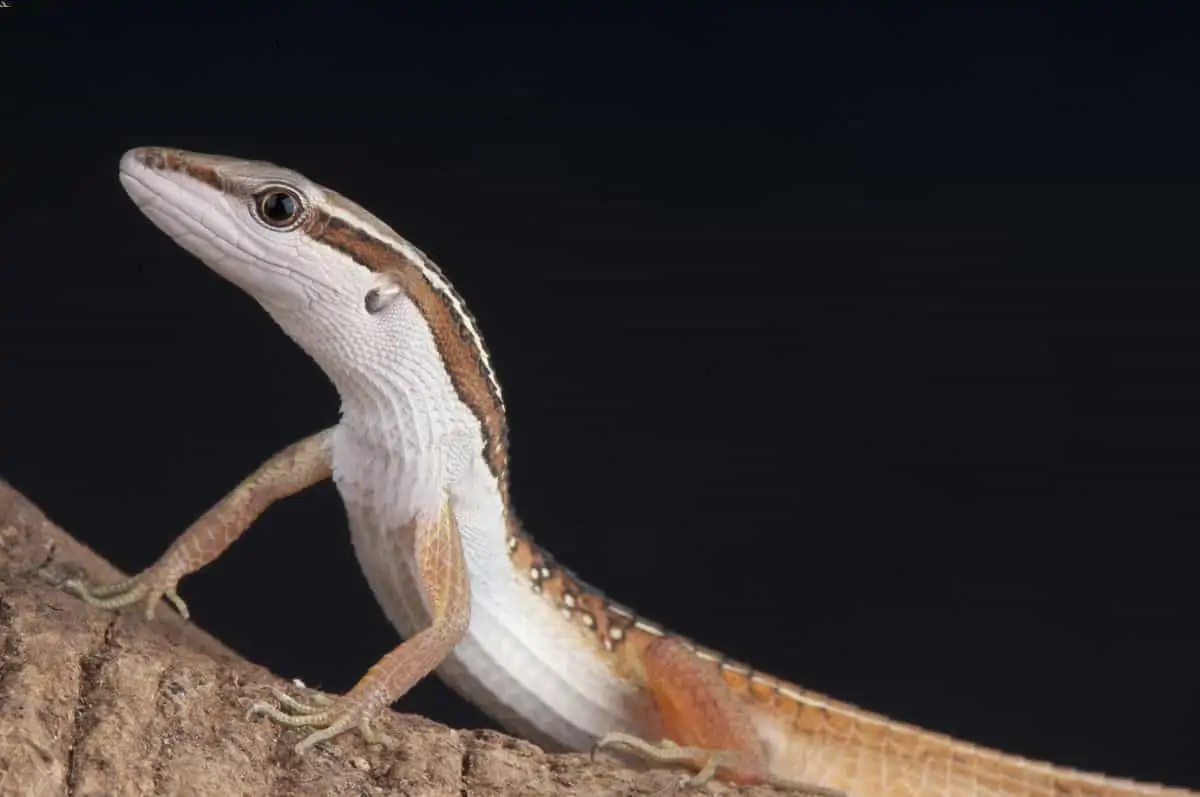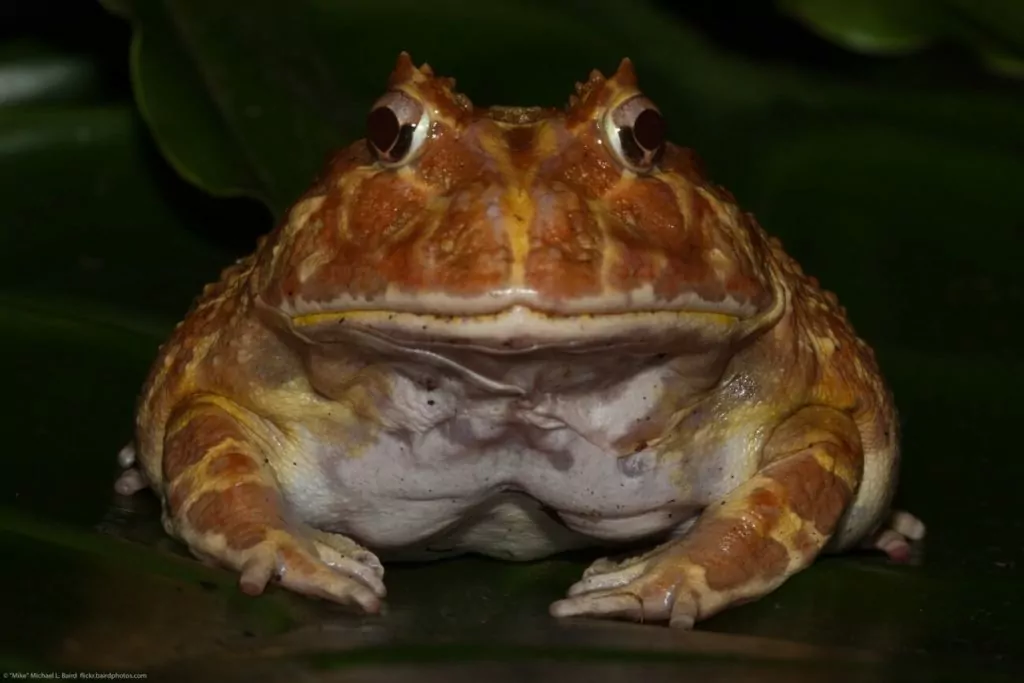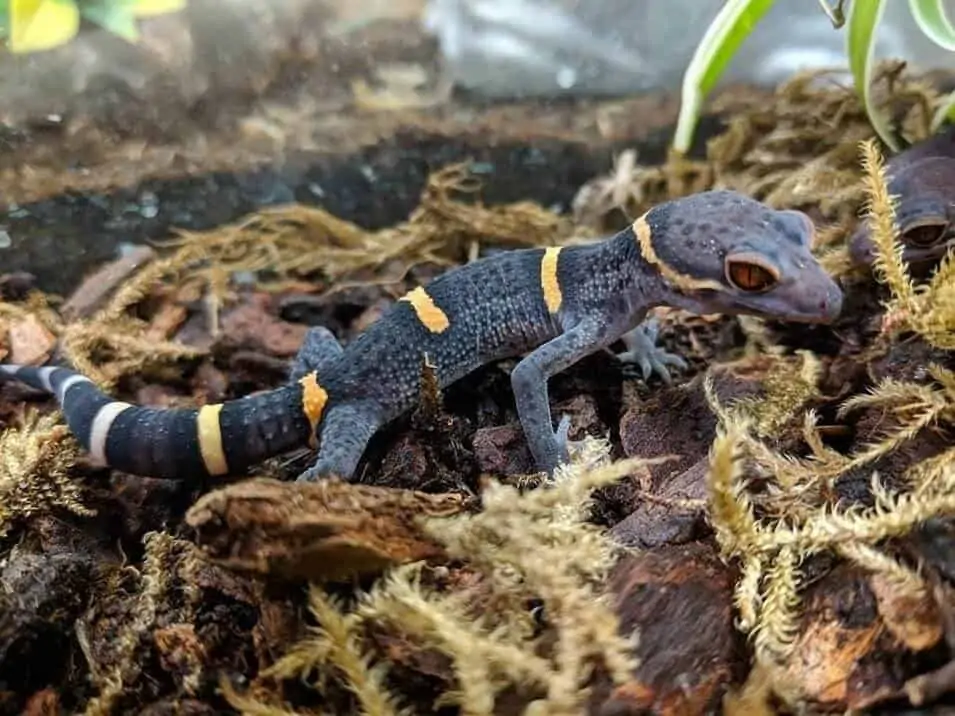The long-tailed lizard is an incredibly unique reptile that can also make a great pet! With their interesting look and low-maintenance care requirements, this is a species that we recommend to other reptile lovers all the time.
But even though these lizards are fairly easy to keep, it’s still important to make sure that you know what they need before you get one for yourself.
This guide will cover all there is to know about long-tailed lizard care. You’ll learn about their habitat setup, diet, handling tips, lifespan, temperament, and more!
Table of Contents
Species Summary
The long-tailed lizard (Takydromus sexlineatus) is an appropriately named reptile species with a very distinct look. As you can probably guess from their common name, these lizards have very long tails!
Most specimens have tails that take up a good 80 percent of their bodies!
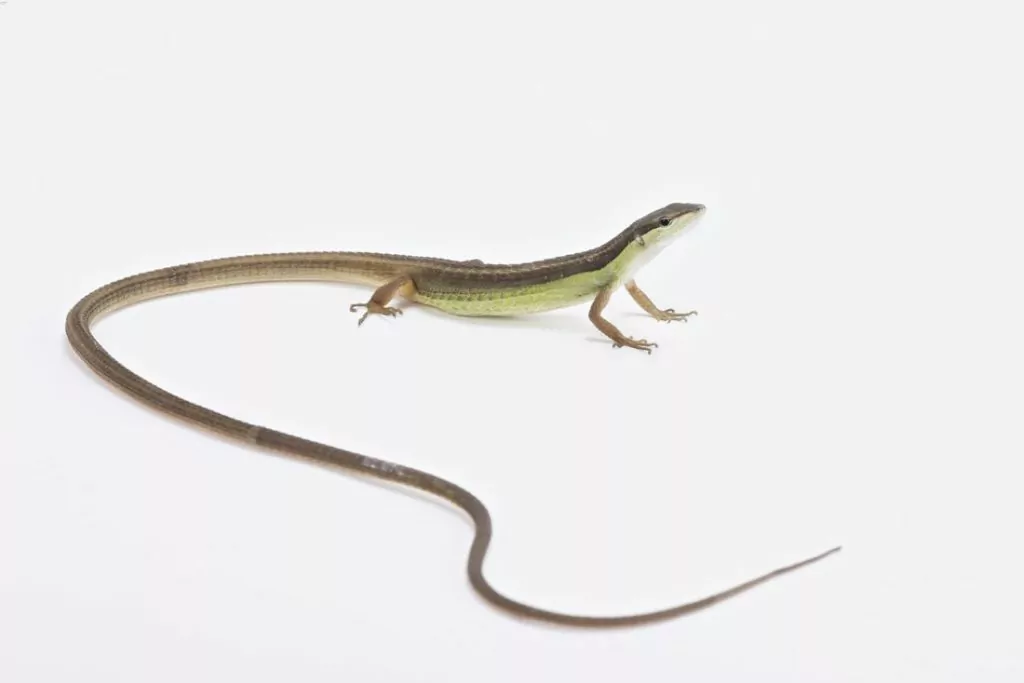
Originally from Southeast Asia and Southern Russia, these feisty lizards spend most of their time in grasslands. You can usually find them in grasslands that are on the edges of forests and jungles.
Agile and athletic, long-tailed grass lizards need ample space to stay healthy. But, they can easily adapt to life in captivity with the right habitat.
Appearance & Colors
Long-tailed lizards are slim and agile. Despite what they look like at first glance, these reptiles are actually quite small (remember, the tail takes up a vast majority of their length).
The head of this lizard is triangular. Meanwhile, the rest of the body is relatively cylindrical and slender. If you didn’t see their tiny legs, it’s not hard to mistake these lizards for snakes!
Long-tailed grass lizards are masters of camouflage! On the belly, they feature a lighter cream or white color. It’s to help them blend in with the sky when viewed from above.
But on their backs, they have shades of green and brown to blend in with foliage when viewed from above. Finer details, like white or black stripes, are common as well.
Stripes run down the entire length of the lizard. The exact color and pattern can vary from lizard to lizard, creating a unique look that stands out.
Expert Tip: Males and females are difficult to differentiate. Breeders will typically look for pre-anal pores on the males. However, you may also notice that the tails on male lizards are also noticeably thicker than the tails on females.
Lifespan
The average long-tailed lizard lifespan is only about five years. That’s assuming you provide the right care and husbandry.
Like any other reptile, long-tailed lizards will react negatively to improper environmental conditions or a poor diet! When your pet lizard doesn’t get the care they need, there’s a good chance that they will become ill and die prematurely.
Average Size
The average size of an adult long-tailed lizard is about 10 to 12 inches. As mentioned earlier, most of that is all tail!
Expert Tip: The snout-to-vent length is much smaller. Most lizards have a body length that’s only about four to five inches long. This measurement gives you a much more accurate representation of how small these lizards are.
Long-Tailed Lizard Care
Don’t let the unique body design fool you into thinking these lizards are a handful to own! Long-tailed lizard care is actually quite simple, since these creatures are surprisingly gentle and easy-going.
As a result, they’re a favorite among beginners and novice herp-lovers. We find ourselves recommending them all the time!
Of course, that doesn’t mean that you should go into the process without doing your homework. Long-tail lizards have preferences and ideal habitat conditions just like any other pet reptile.
Below are some care guidelines to help you provide the best care possible.
Enclosure Size
The first, and most important, thing to consider is the size of your lizard’s new enclosure.
Long-tailed lizards are very active creatures. In the right temperature range, they can remain active all day long with only a few moments of basking here and there (more on that later).
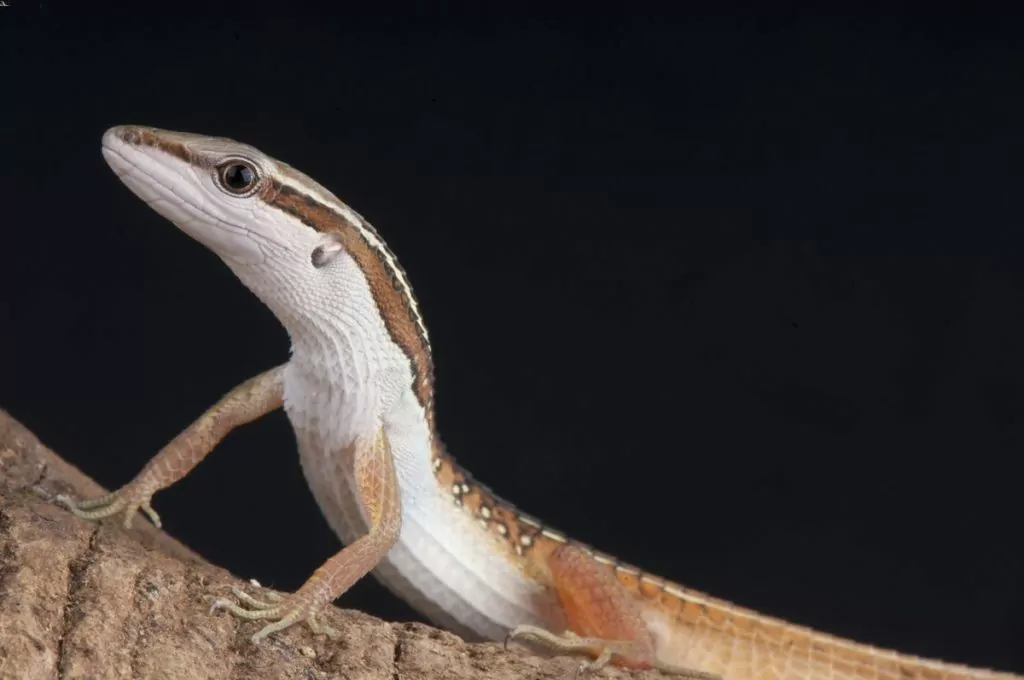
These reptiles love to run and climb, so you need ample space to make that happen.
At the very least, we recommend using a 20-gallon enclosure for a single lizard. If you plan on keeping more than one, provide an additional 10-gallons of space for each specimen.
Go for a vertically oriented terrarium. These lizards are arboreal, so height is important. Your tank should be about 20 inches long, 13 inches wide, and around 17 inches tall.
Those dimensions should be considered the bare minimum for these reptiles to thrive. If you have the means to get a bigger enclosure, by all means, do so! More space is always a plus with long-tailed lizards.
Expert Tip: Whatever size you choose, make sure you have a screened lid with a strong clamp. These lizards happen to be cunning escape artists, too!
Long-Tailed Lizard Habitat Setup
Ask any herpetology fan and they’ll tell you that a natural habitat setup is always best if you want a pet to thrive in captivity. You should aim to recreate the long-tailed lizard’s natural habitat as closely as possible.
Start with a layer of an absorbent substrate. If you want to keep things simple and low-maintenance, you can use newspaper or reptile carpet. Astroturf works well, too.
However, a more natural alternative like peat moss, mulch, or natural forest bark is best. Avoid using sand or wood chips. Those will only cause digestive issues if accidentally eaten.
Once you have your substrate down, adorn the tank with tons of natural climbing surfaces! Use vines, cork bark, and branches to create a network of paths for your lizard to explore.
Lastly, add some live or silk plants to create hiding spots. Having ample places to hide and flee is important for the long-tailed lizard. Empty tanks with tons of undecorated space will only make these reptiles feel more anxious.
Temperature & Lighting
Your next step is to create a proper temperature gradient! Long-tailed lizards thermoregulate throughout the day. In the wild, they can do this by easily moving to sunny or shady spots. But in captivity, they rely on a well-maintained temperature gradient.
Here’s what you need to know:
- On one side of the tank, create a basking spot. Use a basking lamp to raise the temperature to about 95 degrees Fahrenheit.
- On the cooler end, let ambient temperatures drop to about 75 to 80 degrees Fahrenheit.
Expert Tip: These lizards can tolerate temperatures as low as 65 degrees at night. However, they do best between 75 and 95 degrees. In this temperature range, they are more active and have an easier time digesting food.
Use heat lamps and emitters to create your temperature gradient. Under-tank heating isn’t sufficient for these lizards, as they spend most of their time climbing.
Another thing you can’t forget is a UVB lamp! Long-tailed grass lizards are diurnal, so they need UV exposure for around 10 hours a day. Choose a large UV lamp and position it so that it shines light across the entire habitat.
Humidity
Remember how we said your substrate should be absorbent? That’s not to catch spills! It’s to help maintain high humidity levels!
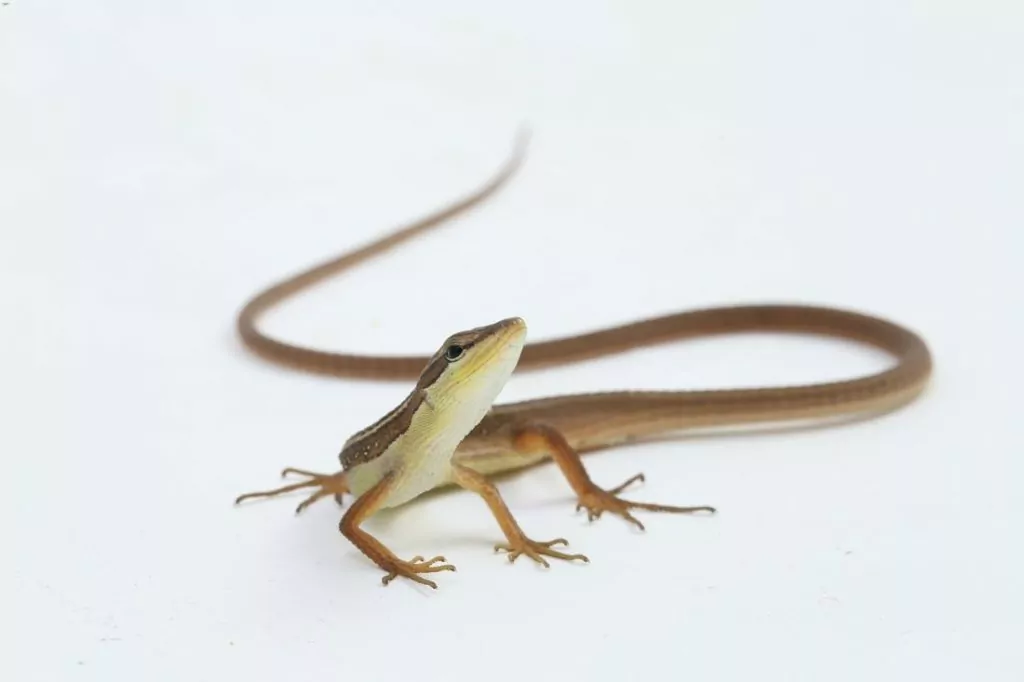
The long-tailed lizard needs between 70 and 80 percent humidity around the clock. To achieve this, mist the enclosure daily. You can also install a water drip system.
Whatever you choose, we recommend installing a high-quality hygrometer inside the habitat. It will provide accurate humidity readings that you can keep a close eye on throughout the day (allowing you to make changes if needed).
Water
A shallow water dish is a must for long-tailed lizards. They might not drink from it at first, but they can learn to lap up water over time.
This is one of the traits that make this species unique to others. Many owners have seen success by installing a drip system that falls into the water dish. Before long, lizards will learn that their dish is safe to drink from!
Even if they don’t get to that point, having a water dish on hand is still important. The dish will raise humidity levels and provide a nice soaking spot for the lizard to cool off.
Food & Diet
Long-tailed lizards eat a wide variety of foods in the wild. In captivity, their diet should consist of mostly insects!
Choose gut-loaded insects that are clean and parasite free. You can get these from your local pet store or breeder.
Crickets are usually the food source of choice for most owners. However, you can supplement crickets with fattier snacks like mealworms, waxworms, flies, and even small spiders.
Expert Tip: Feed adults long-tailed grass lizards several crickets every other day. Younger juvenile lizards should eat every day to support their growing bodies.
About once a week, supplement your lizard’s diet with calcium and multivitamin supplements. Supplements are available in powder form. To give them to your lizard, simply dust the insects in the powder before feeding.
Potential Health Issues
Like any other reptile pet, long-tailed lizards are not immune to health problems. They can suffer from all the usual disorders that affect other pet lizards.
One of the most common issues to plague reptiles is respiratory infections. Infections are usually diagnosed by the presence of mucus, swelling of the mouth and nasal tissue, and breathing difficulties.
Respiratory infections are pretty easy to avoid. In most cases, they affect lizards because of inadequate temperatures and humidity levels. Stay on top of those parameters and your lizards should be good to go!
Another common issue with long-tailed lizards is internal and external parasites. To avoid this problem, keep the environment clean. Spot clean messes every single day and sanitize the tank about once a month.
Expert Tip: Use a reptile-safe sanitizer to clean every surface. This should keep both bacteria and potential parasites at bay.
Behavior & Temperament
Long-tail lizards have a reputation for being a bit flighty and anxious. In the wild, they’re used to zipping along vegetation to get away from would-be predators. It takes a bit to get used to the peace of a captive environment.
But once they get there, long-tail lizards are downright peaceful! They’re surprisingly gentle, but their high energy levels don’t go away.
Most lizards will get up at the crack of dawn to look for a place to bask. They may lounge around for a few hours before moving on and exploring.
In terms of temperament, long-tail lizards are quite peaceful. You can keep a small group of three together without any issues. Some owners even house them with other mellow lizard species.
The only time you will encounter aggression is if you keep more than one male together. They tend to get territorial, so only house a single male in an enclosure to keep the peace.
Handling Them
Believe it or not, long-tailed lizards don’t mind the occasional handling. Of course, it may take some time to build trust before you get to that point!
When the lizard trusts you enough, they should be relatively calm and mild-mannered when you handle them. Always support their body and avoid any sudden surprises that will cause them to flee.
Also, make sure to read your long-tailed grass lizard’s body language. If they don’t want to go into your hand, don’t force it. Bites aren’t a major issue with long-tailed lizards, but they will drop their tail.
This species will drop their tail whenever they sense danger. It regenerates, but regenerated tails rarely look as good as the original!
Do your best to keep your lizard calm to avoid any issues.
Conclusion
Long-tailed lizard care is something anyone can manage. As long as you have a strong understanding of their basic needs, you should be able keep this species happy and healthy.
Owning these reptiles is a lot of fun. Their unique build and active nature makes them quite fun to observe throughout the day. We know many owners who say getting a long tail is one of the best decisions they’ve made!
We hope you feel prepared for ownership after reading this care sheet. If you still have questions, don’t hesitate to send them our way!

